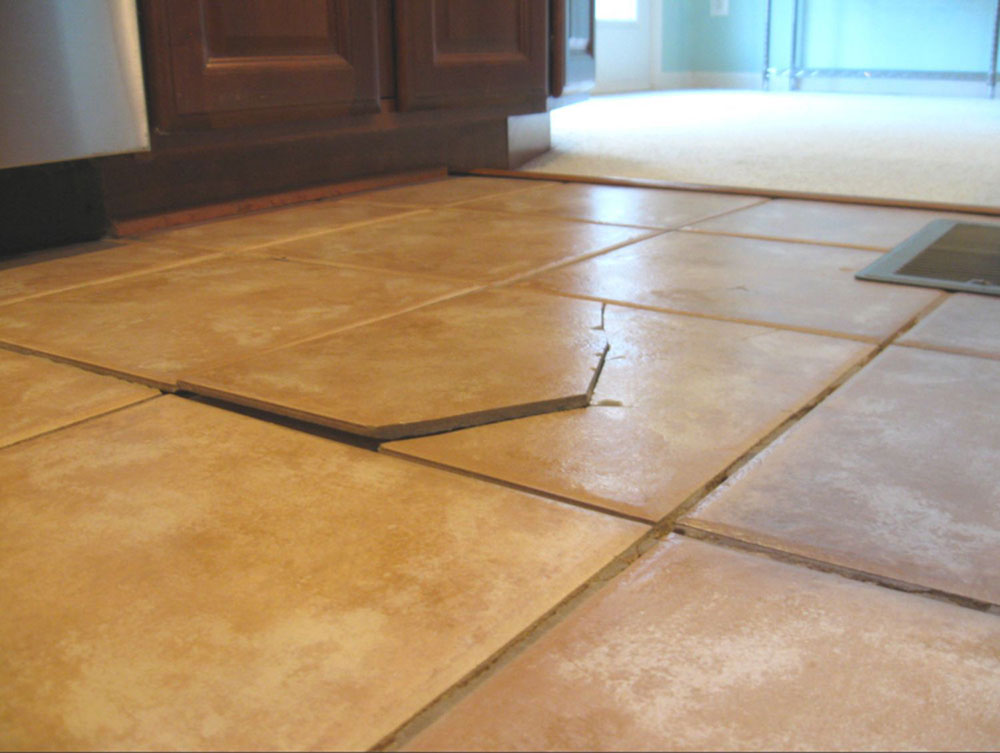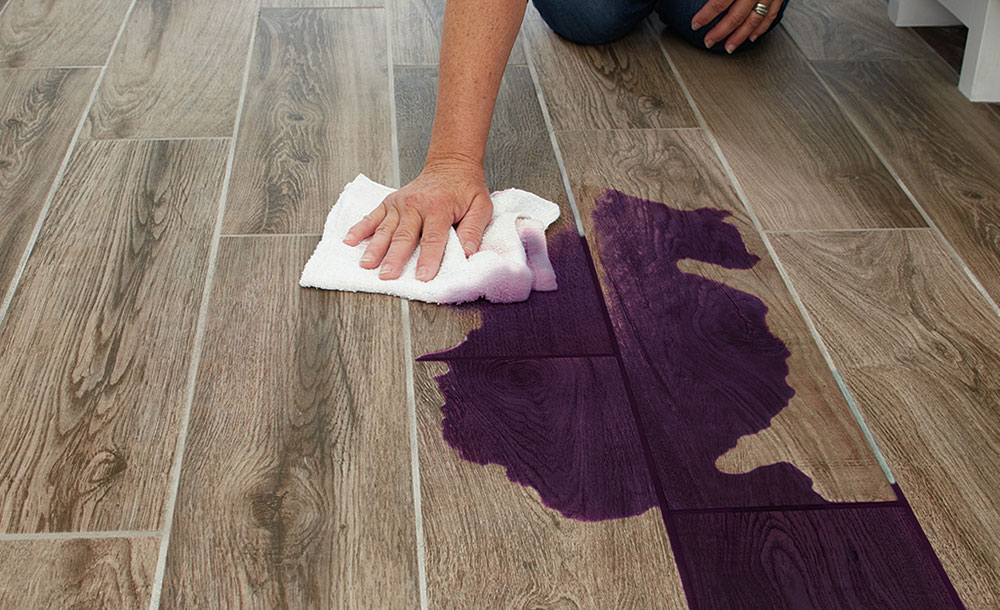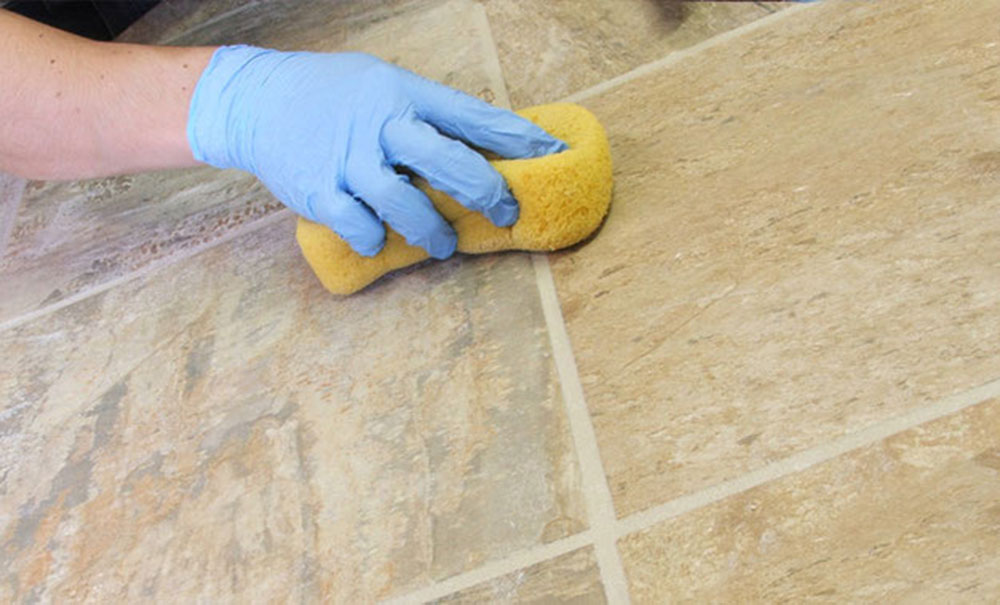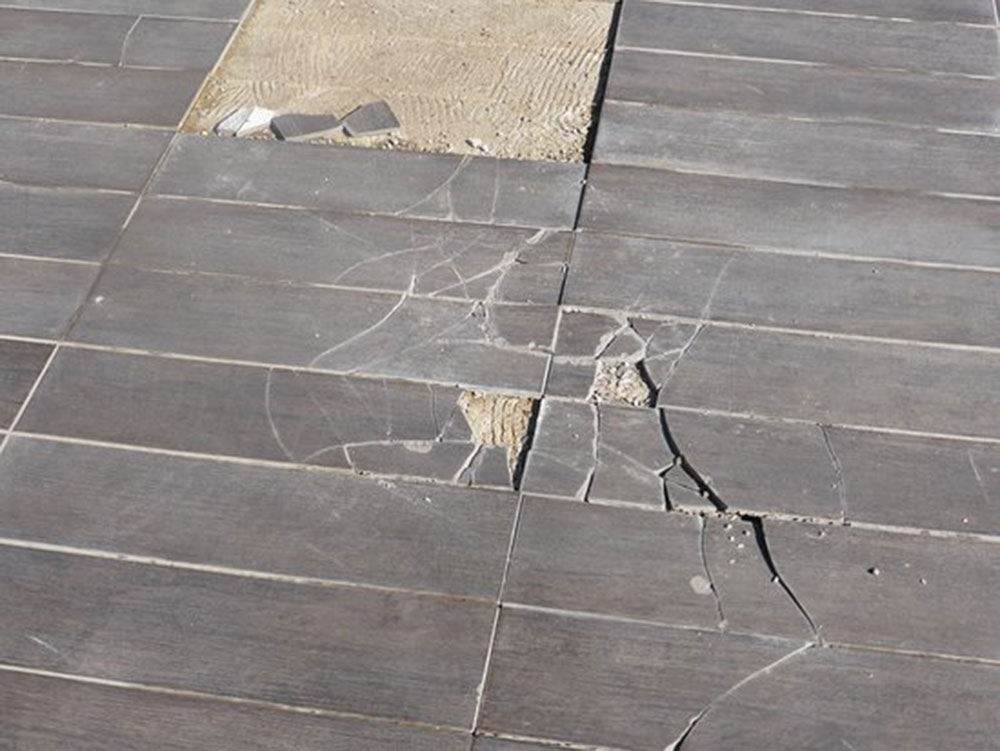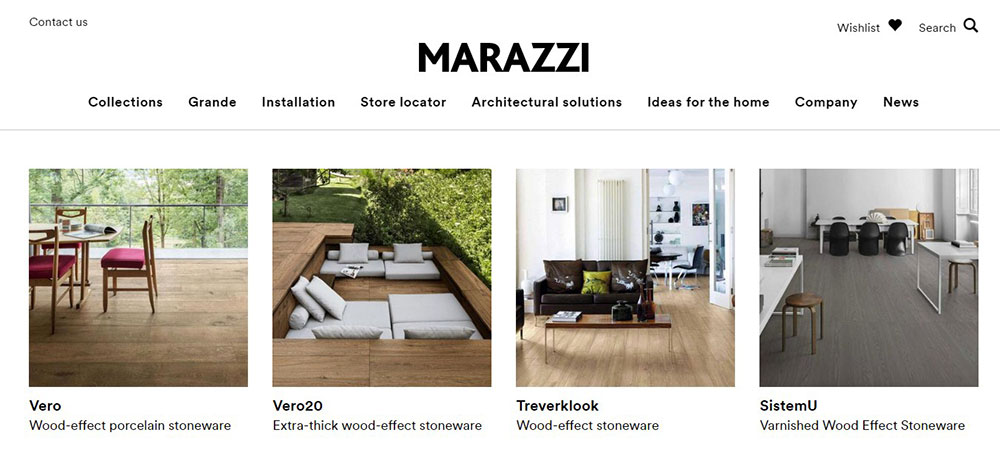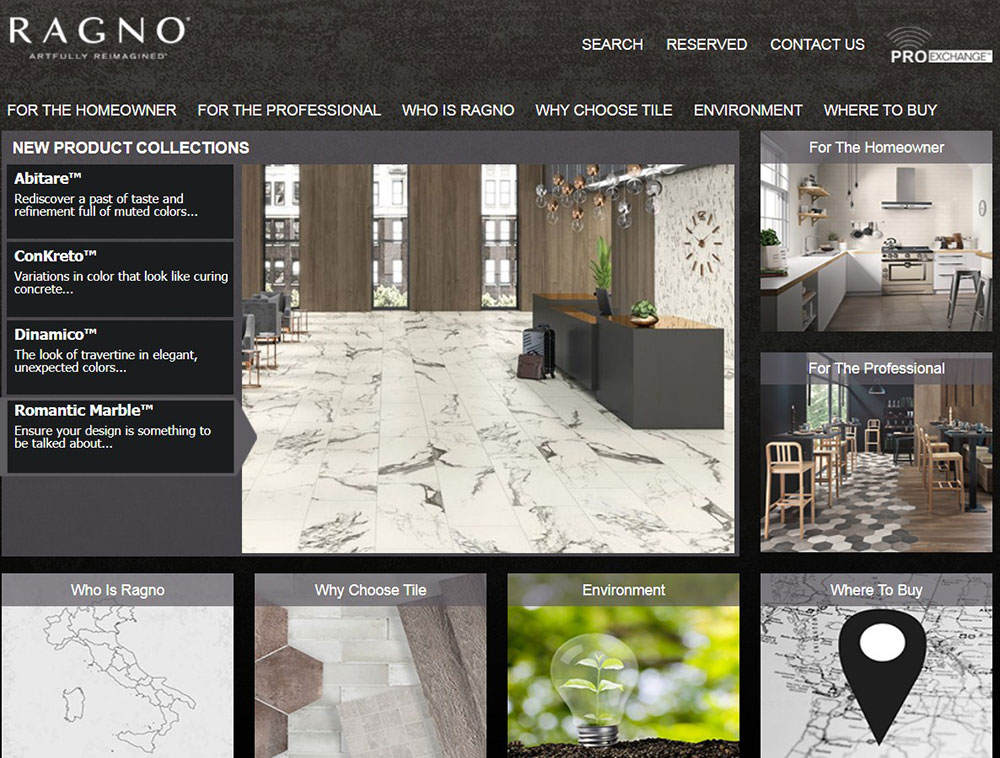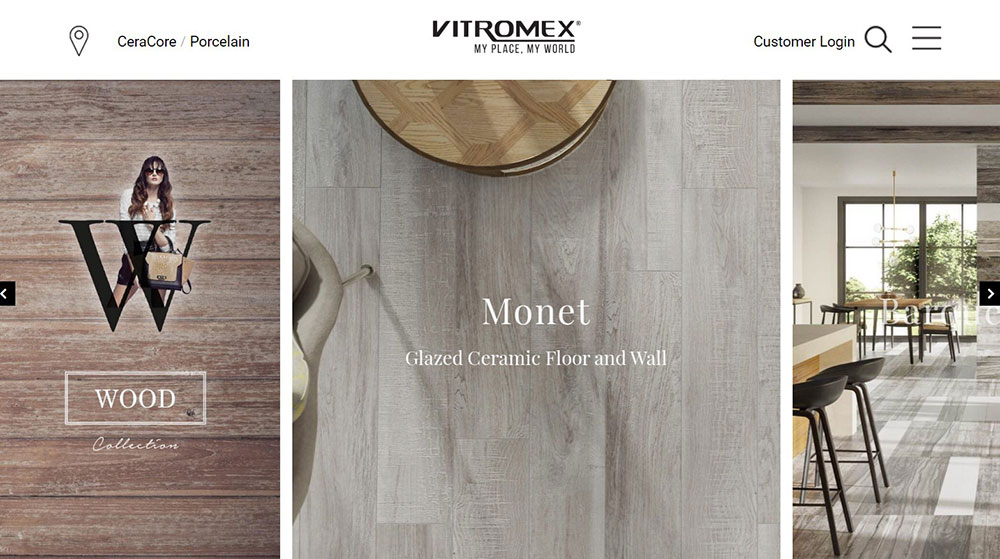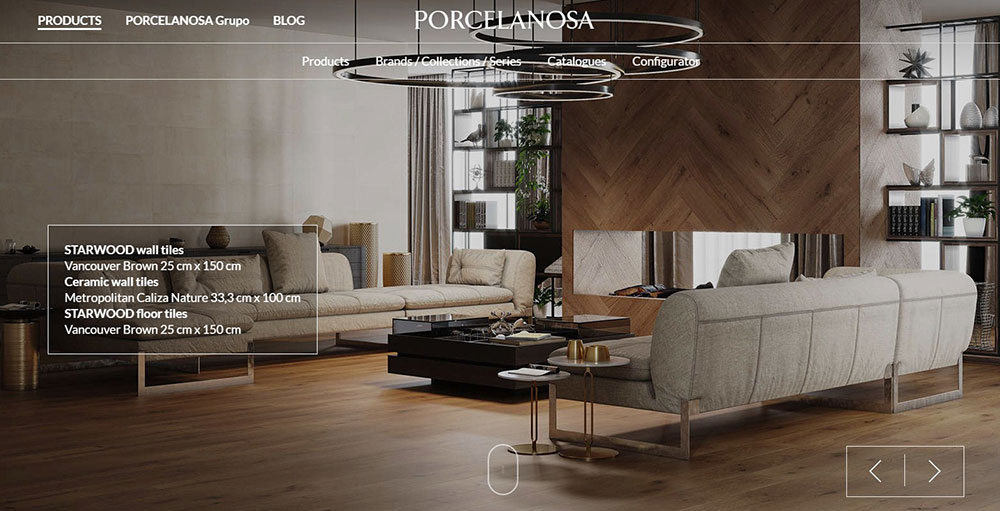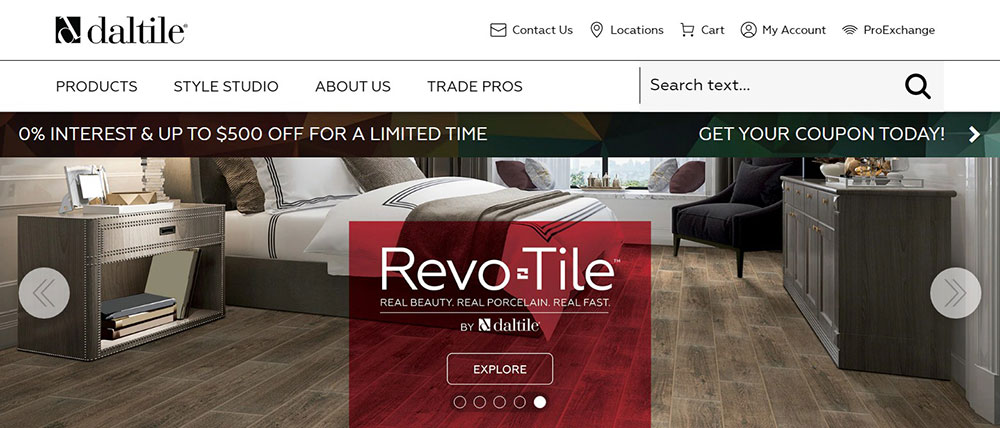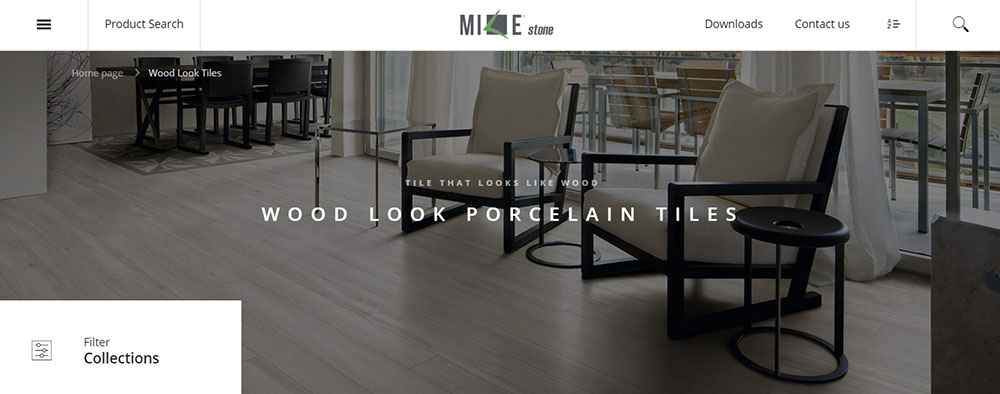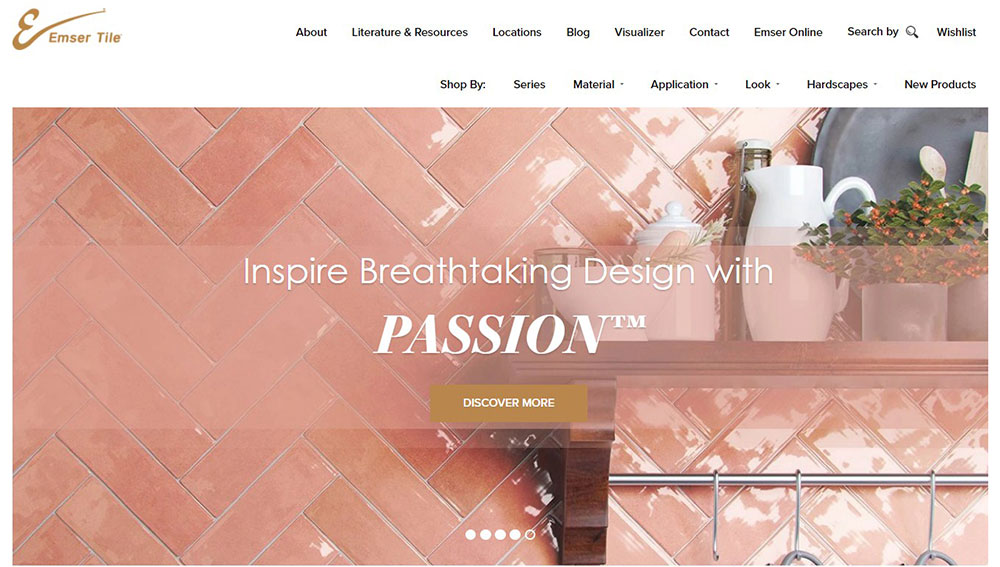Advertisement
If you’re building a new house or renovating your current home, there are some important decisions to make. Flooring is one of them. It is especially important because you will probably stick with it for many years to come.
You need to find something that will not only look great but also work with your budget. Hardwood flooring is a beautiful and sophisticated flooring option, but it’s also quite expensive. Besides, it is hard to maintain and easy to damage.
Technology has come so far that you can have the hardwood floor look with none of the drawbacks. The solution is porcelain wood look tile flooring. Enjoy the beauty of hardwood flooring and the versatility of ceramic or porcelain flooring.
The floor you choose will be a huge part of your house. It can set the tone for the rest of the decor. Be very careful with your choice and consider all the pros and cons before making your final decision.
We created this guide to help you decide whether a wood look tile is the right thing for you. We will discuss all the pros and cons of wood look tile later. First, let’s specify what exactly we are talking about.
What is Wood Look Tile?
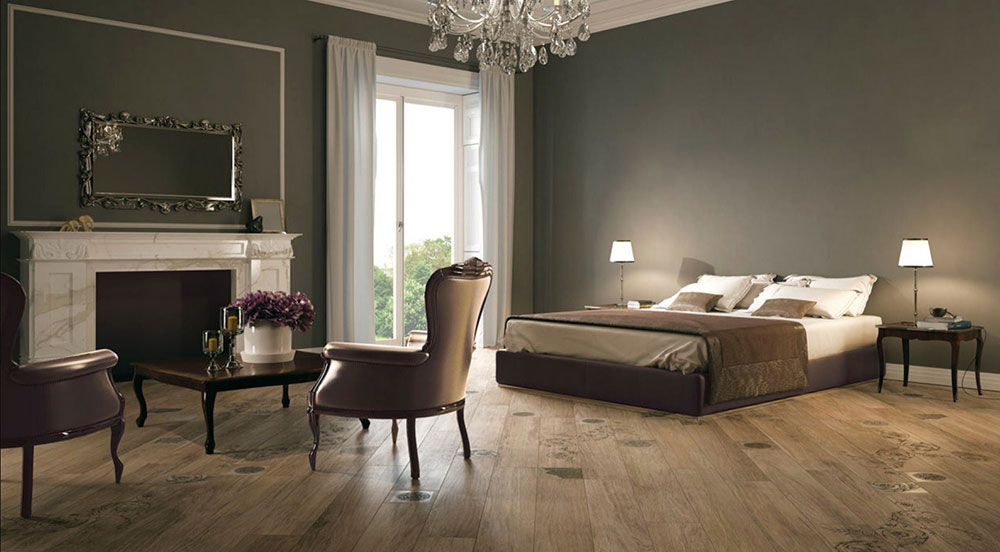
Image source: Qualityflooring4less.com
Wood look tile is a tile that looks like wood. Of course, it’s a bit more complicated than that.
Wood look tiles are made from ceramic materials. They are wood grain tiles. If you’ve ever seen one then you can confirm that they look and feel like real wood. They have all of the advantages of ceramic tiles.
The word “tile” in this context is not very specific. It can refer to one of many flooring types, including linoleum and vinyl. Some materials will do a better job at mimicking wood than others. Do your research before you settle on one.
Most wood look tile products will measure 600 by 600 mm, 800 by 800 mm, or 600 by 900 mm.
Pros of Wood Look Tile
Wood look tiles have become very popular over the years. You will find this type of flooring in some of the nicest homes in the country. There are many reasons why they are so well-liked. Here are some of them:
Affordability
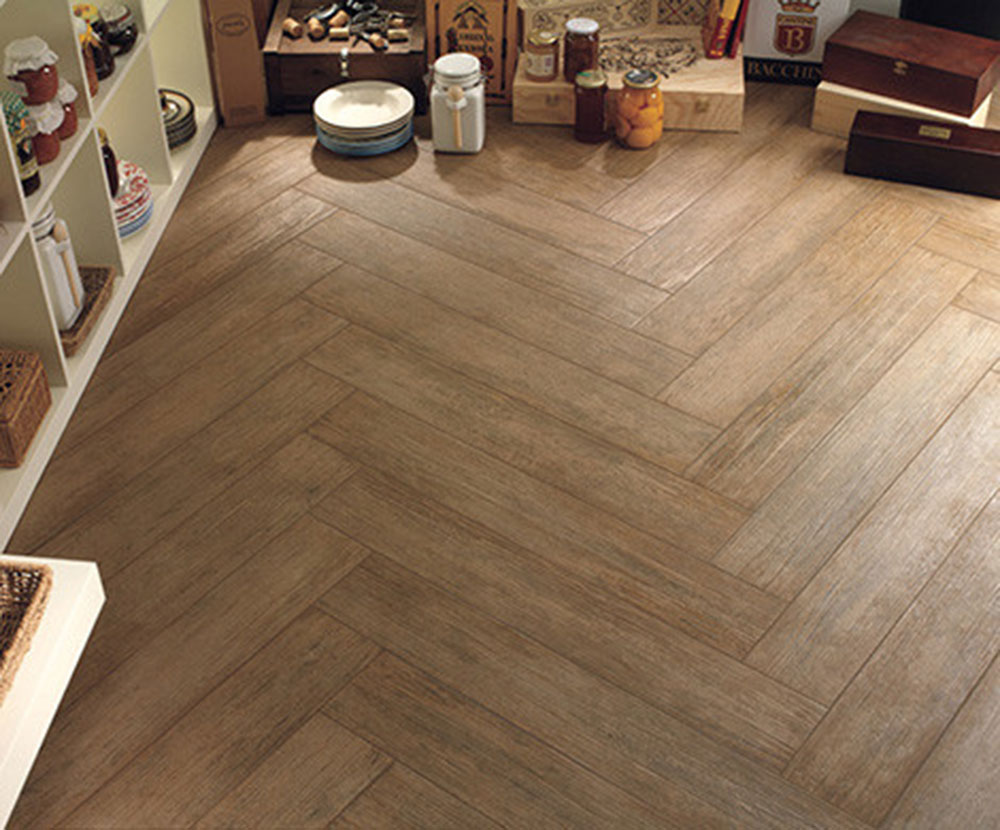 Image source: Siena Marble & Tile
Image source: Siena Marble & Tile
The final cost of buying, installing, and maintaining porcelain tiles will vary from manufacturer to manufacturer. However, this product is less expensive per square foot than other popular flooring options.
Wood look tiles can be made from ceramic or porcelain materials. They are quite versatile, so you can use them on walls too.
The cost of ceramic tiles can range from $2 to $8 per square foot. Porcelain tiles average between $4 and $12 per square foot. The installation will cost around $5 per square foot.
Just for comparison, let’s look at hardwood. Hardwood costs anywhere between $5 and $10 per square foot. The installation costs between $4 and $8 per square foot on average.
Durability
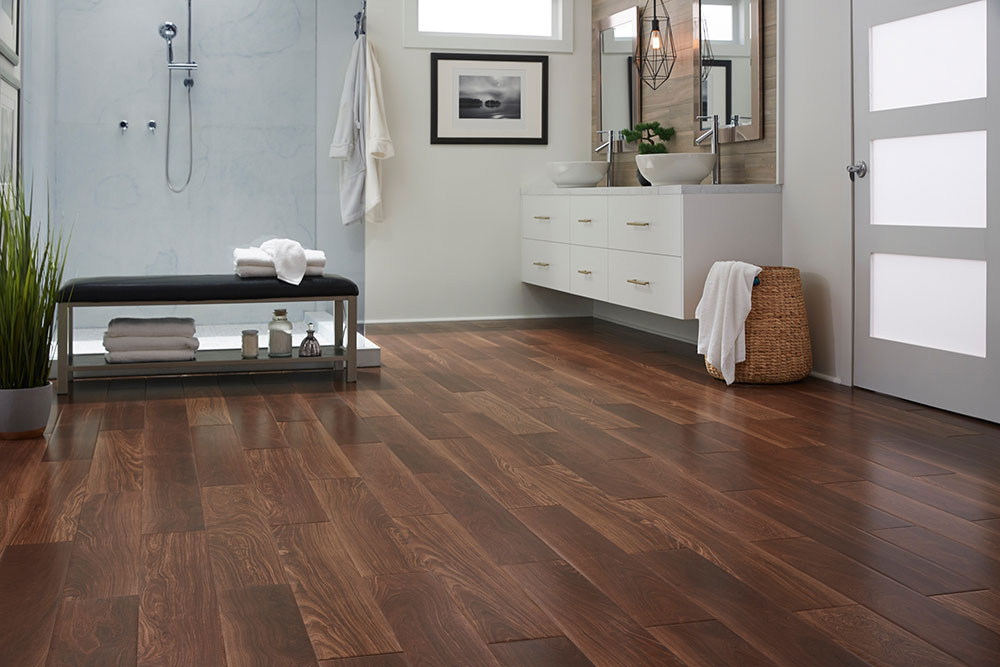 Image source: LL Flooring
Image source: LL Flooring
Tile is one of the most durable flooring options. Your ceramic or porcelain tiles will still look brand new after 20 years of use. Hardwood or engineered hardwood would begin to look quite worn after a few years.
However, that doesn’t mean you can completely neglect flooring care and maintenance. You should still be quite careful with your tiles. For example, if you drop a heavy object on the floor, you can easily break the object. Even worse, you can chip one of the tiles. You can’t fix chipped ceramic tiles as easily as you would a dent in a hardwood floor.
Other than that, care and maintenance are very simple.
Style options
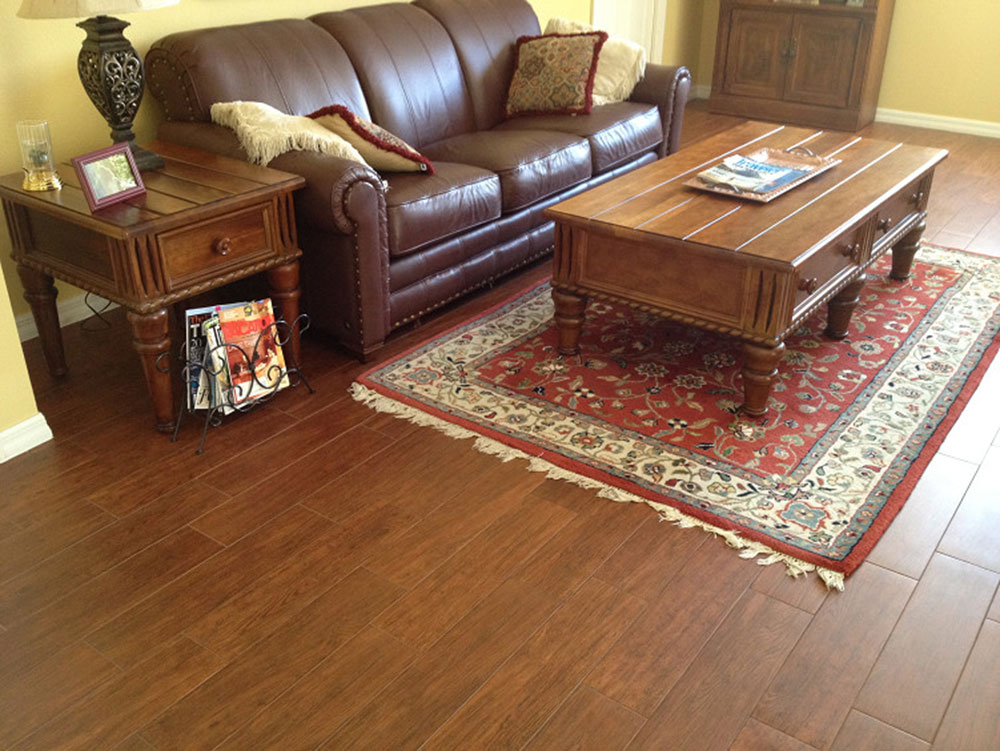 Image source: Ceramictec
Image source: Ceramictec
Wood look tiles are made with professional inkjet technology. It prints a very realistic image of wood onto the ceramic tile, and there you go! The surface can be textured too. That will make it even more realistic.
Choose from a wide variety of colors, finishes, and textures. Oak, cherry and rustic driftwood are just some of the options available. With the number of different brands on the market, you are sure to find the look that will complement your decor the most.
When porcelain first got discovered, the options were very limited. Now, the amount of options is overwhelming. You can choose from a large number of styles and designs.
Versatility of installation
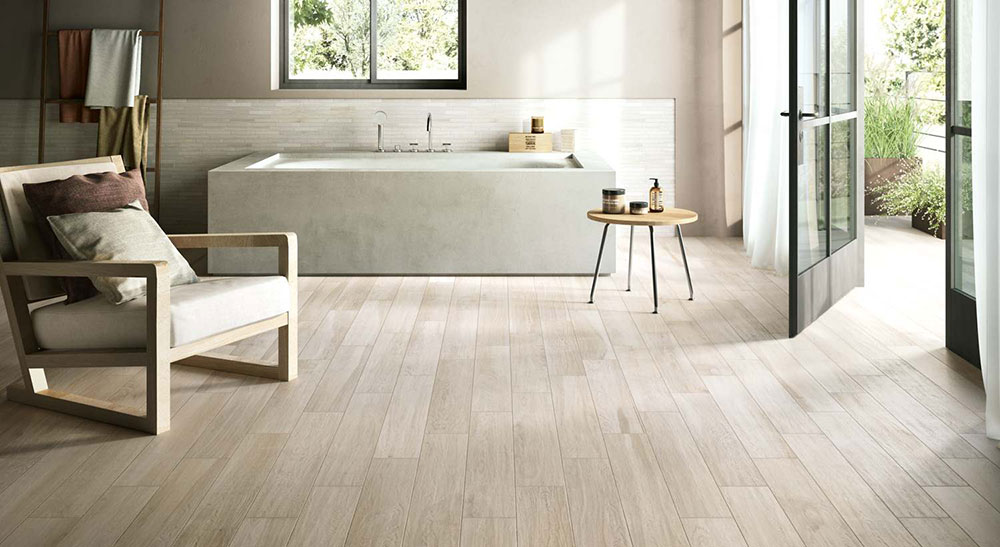 Image source: Qualityflooring4less.com
Image source: Qualityflooring4less.com
Wood flooring does not allow for water exposure. There is absolutely no way you would have hardwood in the bathroom, for example. It really is quite impractical, though it does look nice.
Wood look porcelain or ceramic tiles can be installed anywhere. You don’t need to worry about water exposure or humidity. Use wood look tiles in the bathroom or the kitchen if you want.
Another thing that makes tiles so versatile is that they don’t need a subfloor for installation. They stick to cement very well. You can save some money and avoid laying a subfloor.
However, make sure there are no cracks in the cement before you get to installing the tiles. The cement should all be on the same level so the tiles are straight.
Cleaning and maintenance
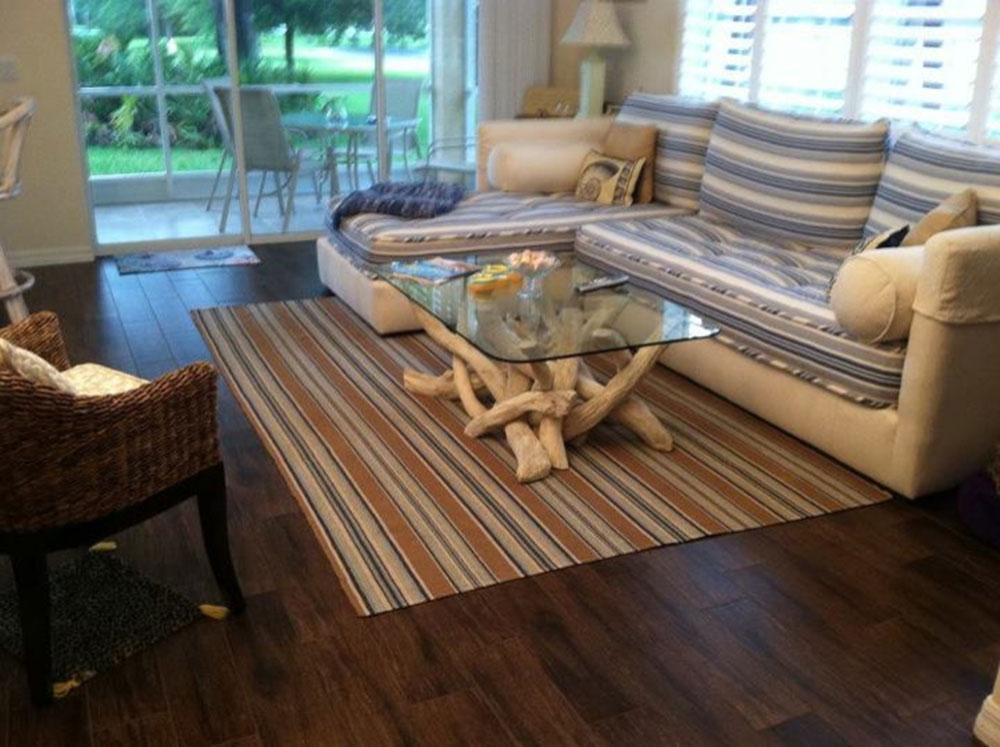 Image source: Ceramictec
Image source: Ceramictec
As you already know, wood is very demanding. It requires a special cleaning routine. The floor cannot get too wet during cleaning, and you cannot use harsh chemicals.
Porcelain and ceramic tiles are not picky. Sweep them or vacuum them; it doesn’t matter. Watch out for harsh acidic or abrasive cleaning agents though! Those can damage your tiles over time.
Eco-friendliness
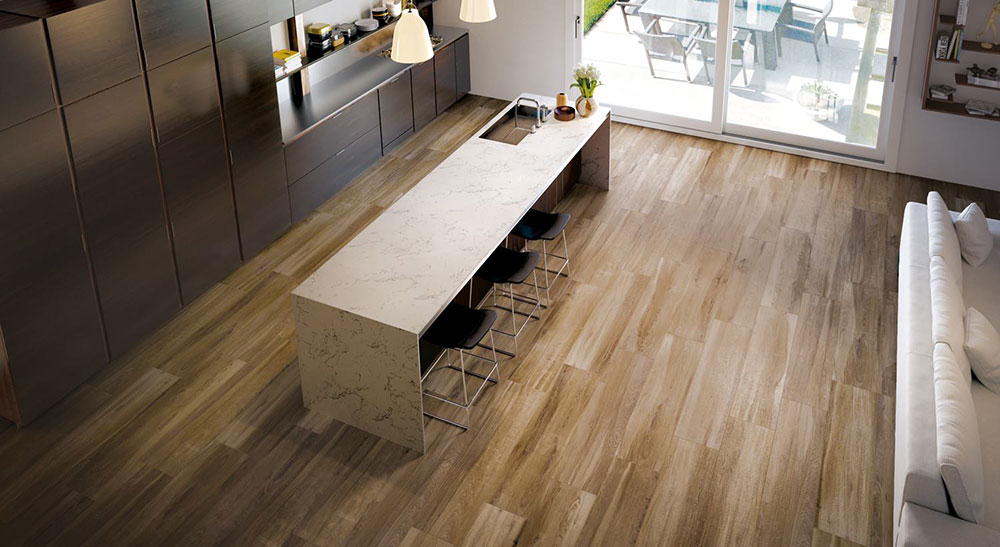 Image source: Qualityflooring4less.com
Image source: Qualityflooring4less.com
Wood look tiles are made from eco-friendly materials, such as sand and clay. They can be recycled, so you can throw them away guilt-free. Ground-up pieces of tiles are used in road construction.
The final product is safe for people and the environment. There are no toxic compounds in tiles, unlike other flooring types.
Safety
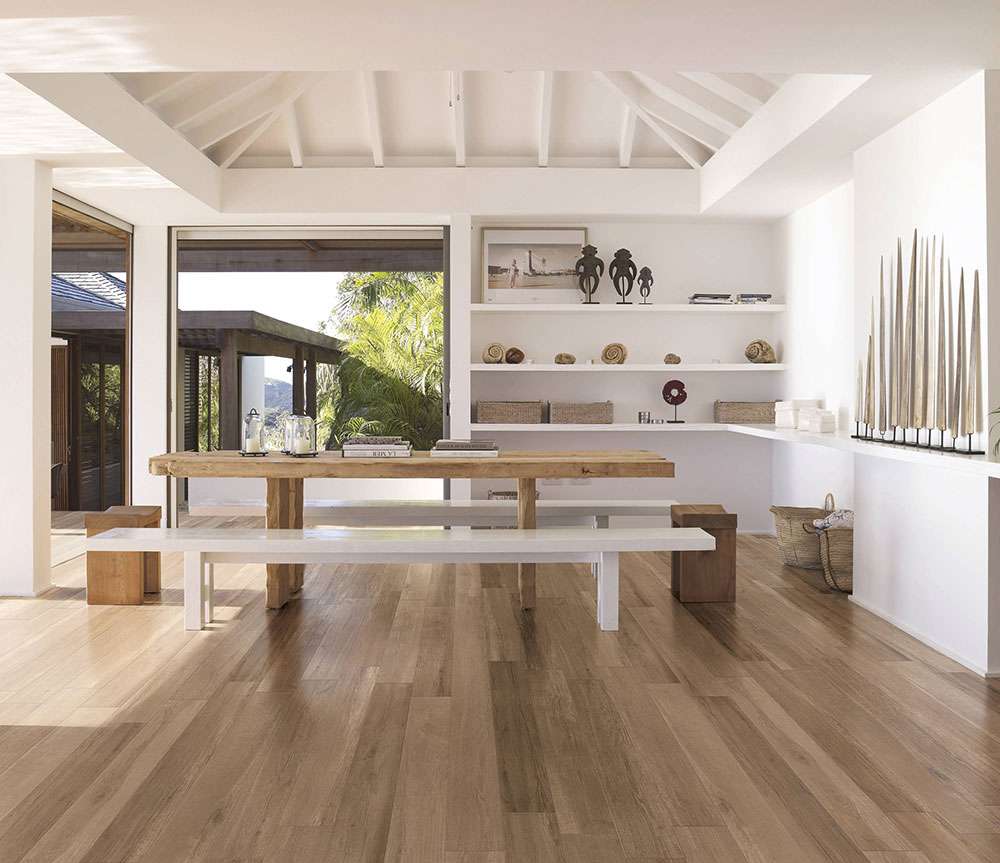 Image source: Horizon Italian Tile
Image source: Horizon Italian Tile
Chances are, you have pets and/or kids. Both tend to be quite clumsy. That increases the risk of scratches, spills, and other unfortunate accidents. Wood look tiles are very durable, so they’re perfect for kids and pets.
Tiles are also hypoallergenic. There is no need to worry about your kid having an allergic reaction to the floor. Since tiles are smooth and slick, dust mite and pollen won’t settle on them. Even if they do, you can easily wipe it off with a cloth. Another advantage is that there are no VOCs in tiles.
While that’s all great, nothing is perfect in this world. Wood look tiles have disadvantages too. Let’s look at some of the downsides of having porcelain or ceramic tiles!
Cons of Wood Look Tile
Wood look tiles are not perfect for every home, and here is why:
Comfort
Tiles are very hard. If you’re going to stand for long periods, it might get uncomfortable. That’s common in kitchens. It’s even worse if you need to kneel for whatever reason.
Try not to drop anything on the floor. The object can crack, and so can the tile.
To combat this problem, you can buy an anti-fatigue mat. That will make standing more comfortable. Ultimately, the tiles will still be there, and there is nothing you can do to make them softer.
Fixing and refinishing
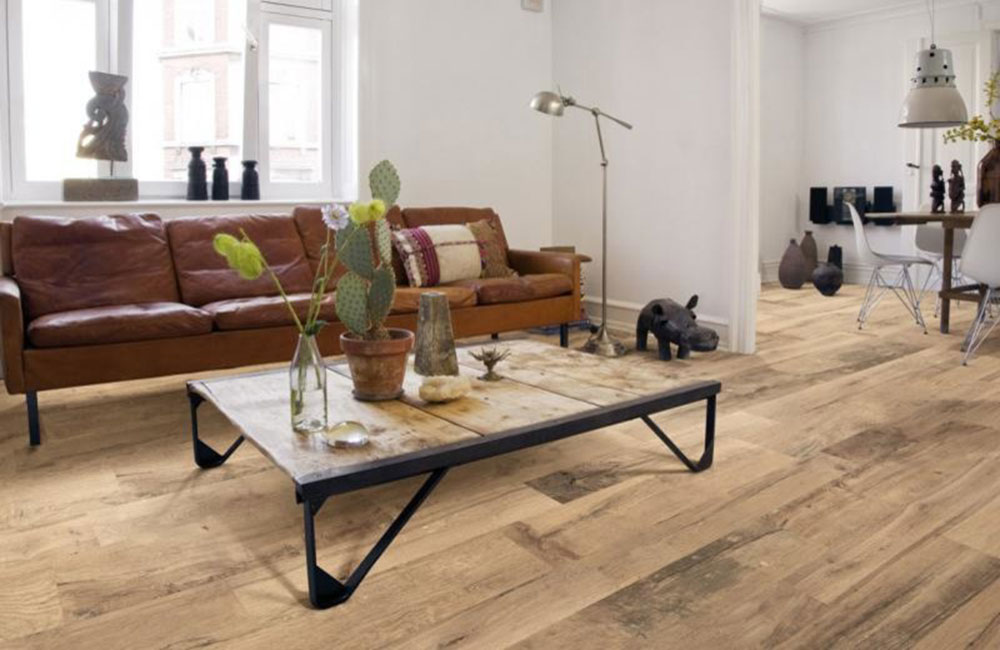 Image source: Porcelain Tile Store
Image source: Porcelain Tile Store
Even if you’re extremely careful, cracks and scratches are bound to appear sooner or later. To prepare for that, make sure you stock up on some extra wood look tiles. You can use them later if you ever need to replace a tile. Styles change all the time, so it might be hard to find an exact match later on.
One benefit of hardwood is that it’s more forgiving when it comes to refinishing. It allows for rebuffing at any point. Porcelain does not. If you’re especially afraid of chipping your tiles, pick a timeless design. That way you’ll be able to find it in stores and repurchase later.
Slick
If you want to make the floor less slick, you can go for a textured or hand-scraped finish. These add some texture and make the floor less slippery. However, tiles will still be slippery when wet. Beware of that!
Get textured tiles in rooms where spills are common, like kitchens and bathrooms. If you have children or pets that could slide on the tiles, we recommend opting for textured tiles too. It’s better for their safety.
Grout
Porcelain tiles need grout to stay in place. The grout in between the tiles will soon begin to look grimy and dirty with a lot of foot traffic. Don’t forget to clean your floors very thoroughly.
If you neglect proper maintenance, the material can get quite ugly. That would call for an expensive repair. You don’t want to take away from the affordability of this flooring type, right?
Difficult installation
Wood look tile installation is not an easy job. An unskilled person won’t pay attention to the little cracks in the subfloor, for example. As a result, the floors will be uneven. If the subfloor is not waterproof, water can seep through the cracks and lead to mold.
Naturally, professional installation is essential. It can be very time-consuming though. If you’re changing your floors instead of just installing new tiles, you will need a professional for that too.
Cold
Porcelain, as a material, is quite cold. The floors can feel unpleasant to step on, especially in the colder months.
You can solve this problem by installing radiant heating under the floor. A heating system underneath will make the tiles warm and pleasant to walk on. You can turn the heating off in the summer months and enjoy your pleasant cool tiles.
Breakage
Tiles are very hard, so anything you drop on them can cause the object to break. The impact can also chip the tile. Always keep some spare tiles in the garage to replace a broken one if needed.
So, this is it with the pros and cons of wood look tile. Let’s look at places where to buy these.
Where to Find the Best Wood Look Tiles
Picking tiles is an exciting process, but also an important one. You’ll have to stick with them for a long time! You might feel as though you’re saving money by picking the cheapest tiles, but you would be wrong. Opting for the cheapest options can lead to expensive repairs in the future.
Here are some brands that offer excellent wood look tiles:
Marazzi
Marazzi has been in the tile business for over 30 years now. It is one of the oldest brands on the market. It was the first Italian-owned manufacturer in the US. The company has over 6,000 employees in 4 different countries.
You can choose from hundreds of color options and patterns. Even the pickiest customers will find what they’re looking for.
MSI
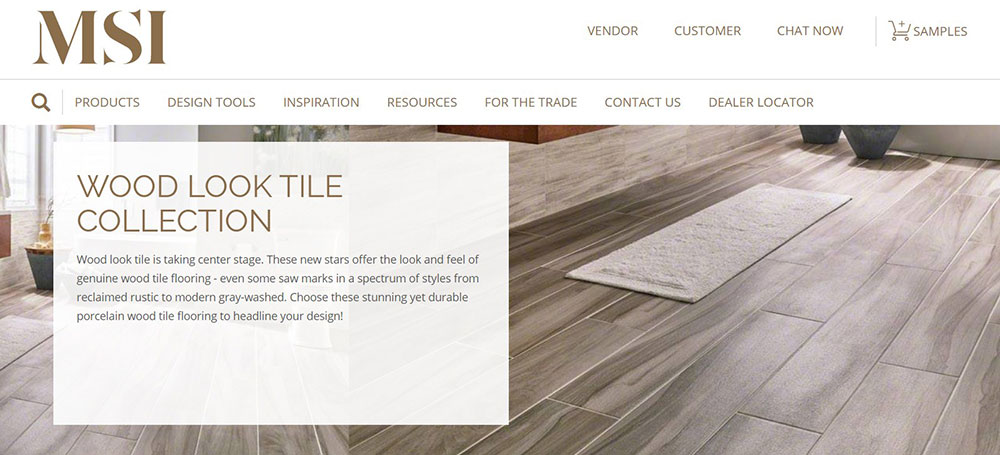
MSI has been in business since the mid-70s. It is one of the largest tile manufacturers in the world. The brand offers luxury vinyl tiles and stones, as well as ceramic and porcelain tile lines.
There are 19 styles of ceramic tiles spread over 5 collections. You will find loads of natural tones, such as Taupe and Palm. If you’re looking for something more unique and unorthodox, look no further. Shades like White from the Carolina Timber collection and Nero are quite interesting.
Overall, you’ll find more porcelain options. There are 32 styles spread over 10 collections. The majority of the tiles boast a 4 or 5 PEI rating.
Ragno USA
Ragno offers 5 varieties of tiles. There are more than 17 colors and designs. The average price per square foot ranges between $5 and $7. The tiles look extra realistic because they are created using 3D printing technology. You will also find glass and metal tiles at Ragno.
The company has been around for over 30 years now. It was founded in 1982. Ragno USA is a big player in the flooring market. You can buy tiles from Ragno online and in home improvement stores.
Merola
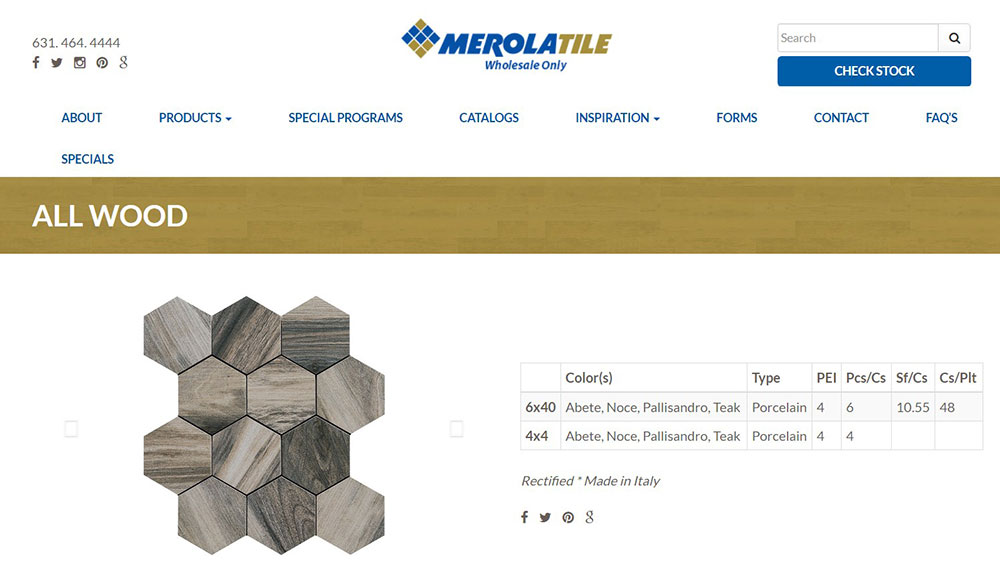
Merola has divisions in New York and New Jersey. The brand’s New Jersey division is the national distributor of Home Depot since 1999.
You can choose from 40 color options and 20 sizes of wood look tiles. Merola is a bit more expensive than other brands, starting at $6 per square foot. If you want to have a look, visit your local Home Depot.
Vitromex
Vitromex started making tiles in 1967. The brand is very sustainable and eco-friendly. It was originally founded in Mexico. Now, Vitromex operates in Mexico and the US.
You will find wood look tiles in 19 different shades. The shades range from earthy brown to white. The prices range between $5 and $11 per square foot. Visit the company’s official website to get free flooring samples.
Porcelanosa
Porcelanosa only has 2 lines of wood look tiles. The Par-ker line has over 75 colors and many different textures. Seedwood has over 50 colors and features many sizes and designs that you can choose from. The tiles are in the luxury segment. Though pricey, they are some of the best wood look tiles on the market.
Daltile
Surely, you’ll know Mohawk. Daltile is a subsidiary of Mohawk Industries! The company is based in Dallas and was founded in 1947. It is now the largest supplier of ceramic floors in North America.
There are 18 collections of just wood look tiles! Choose from 75 different colors and shades of tiles.
Florim USA
Florim is based in Clarksville, Tennessee. This brand’s products are very eco-friendly. Florim also offers good value for money. Generally speaking, the brand’s tiles are high-quality.
Florim tiles contain 40% recycled materials. Wood look tiles are sold in 36” slats. You can pick from 35 different styles over 6 collections.
Esmer Tile
Esmer Tile is another legendary brand that has been around for a long time. All the products are eco-friendly and made with sustainability in mind. You can choose stone, glass, ceramic, or porcelain tiles. The wood look tile collection has many shades and textures to choose from as well.
FAQs about the pros and cons of wood-look tile
1. What are the advantages of wood look tile over real wood flooring?
Over real wood flooring, wood appearance tile provides a number of benefits, including durability and resilience to wear and tear, moisture, and scratches. Additionally, it is less expensive than the majority of hardwood flooring options and is available in a huge range of hues and patterns. Additionally, wood-look tile can be used in rooms with high moisture content, such as bathrooms, and basements, where hardwood flooring is inappropriate.
2. What are the disadvantages of wood look tile compared to real wood flooring?
The fact that wood look tile might feel colder and rougher underfoot than actual wood flooring is one of its key drawbacks. Furthermore, wood imitation tile may be more challenging to install and may not have the same warmth and character as real wood flooring. Additionally, wood look tile could not increase the value of a home as much as real wood flooring would because of its slightly artificial appearance.
3. How durable is wood look tile compared to real wood flooring?
Real wood flooring is typically more brittle and susceptible to damage than wood appearance tile. It is significantly less prone to moisture damage or warping, and it is much less likely to scratch or dent. Although wood appearance tile is more resilient generally, dropping large objects on it could still cause it to break or chip.
4. Can wood look tile be used in areas with high humidity or moisture levels, such as bathrooms or kitchens?
It’s true that wood look tile is the best flooring choice for rooms with a lot of moisture, such as bathrooms, kitchens, and laundry rooms. Like real wood flooring, it is resistant to dampness and won’t warp, buckle, or decay. Additionally, wood-look tile is simple to keep and clean, making it a fantastic option for these high-traffic areas.
5. Does wood look tile require special maintenance or cleaning compared to real wood flooring?
Compared to actual wood flooring, wood appearance tile needs less upkeep and cleaning. It may be readily cleaned with a moist mop or towel and does not require refinishing or sealing. Additionally, wood appearance tile is a low-cost and low-maintenance flooring option because it doesn’t require any specific cleaning supplies.
6. How does wood look tile impact the resale value of a home compared to real wood flooring?
Although wood look tile might be a terrific alternative for flooring, real wood flooring might add more value to a home. Real wood flooring may be more appealing to some customers, and they may be willing to spend extra for it. However, individuals opting for a more affordable and low-maintenance flooring alternative can still benefit greatly from wood appearance tile.
7. Are there different styles and colors of wood look tile available, and how do they compare to real wood flooring options?
Wood effect tiles come in a wide range of designs and hues, some of which even imitate the appearance of classic hardwoods like oak, maple, and cherry. Many wood look tiles are convincing and can be a wonderful alternative for people on a budget or seeking a low-maintenance flooring option, even though some may not be able to fully imitate the warmth and character of real wood flooring.
8. What is the installation process like for wood look tile compared to real wood flooring?
Real wood flooring installation is typically simpler and quicker than installing wood appearance tiling. In order to get a convincing wood-like appearance, wood look tile requires a sturdy, level subfloor and meticulous placement and spacing of the tiles. Grout lines also need to be carefully sealed to stop water damage and stains.
9. Does wood look tile retain heat in the same way as real wood flooring, and is it comfortable to walk on barefoot?
When compared to actual wood flooring, wood appearance tile may feel colder, harder, and not hold heat as well. To give warmth and comfort, underfloor heating systems can be installed. Additionally, some varieties of wood appearance tile are made to feel plusher and comfier. Furthermore, a lot of individuals discover that wood-look tile feels good under their bare feet and may even be cooler and more pleasant in hot weather.
10. How does the cost of wood look tile compare to real wood flooring, and is it a more cost-effective option?
With typical costs ranging from $2 to $10 per square foot, wood look tile is frequently less expensive than actual wood flooring. Real wood flooring, on the other hand, can range in price from $5 to $20 per square foot or more, depending on the type of wood and the manner of installation. Real wood flooring may increase a home’s value and provide a more genuine appearance and feel, but wood look tile can be a more affordable alternative for those on a tight budget or seeking a low-maintenance flooring solution.
Ending thoughts on the pros and cons of wood look tile
After reading this guide, you should have a good idea of what the pros and cons of wood look tile are and whether wood look tiles will fit your needs. If you’re ready to pick your perfect porcelain or ceramic tiles, check their PEI rating. The rating will tell you how strong the material is and what it is suitable for.
The rating goes from 1 to 5, with 1 being the lowest. If the rating is indeed as low as 1, the material is not suitable for foot traffic at all. It can only be used on walls and such. Don’t buy it for your floors.
Wood look tiles are very versatile and durable for the most part. They have many advantages. If you’re willing to put up with the drawbacks of this type of flooring, then there is no reason you should pass on it.
Don’t stress the hardness of the material too much. You can always use rugs for areas with heavy foot traffic. The same goes for rooms where you’ll be doing a lot of standing. Use heating systems to keep the floor warm and your home cozy.
There is no problem that cannot be solved. Wood look tile is definitely a worthy investment!
If you enjoyed reading this article about the pros and cons of wood look tile, you should read these as well:

